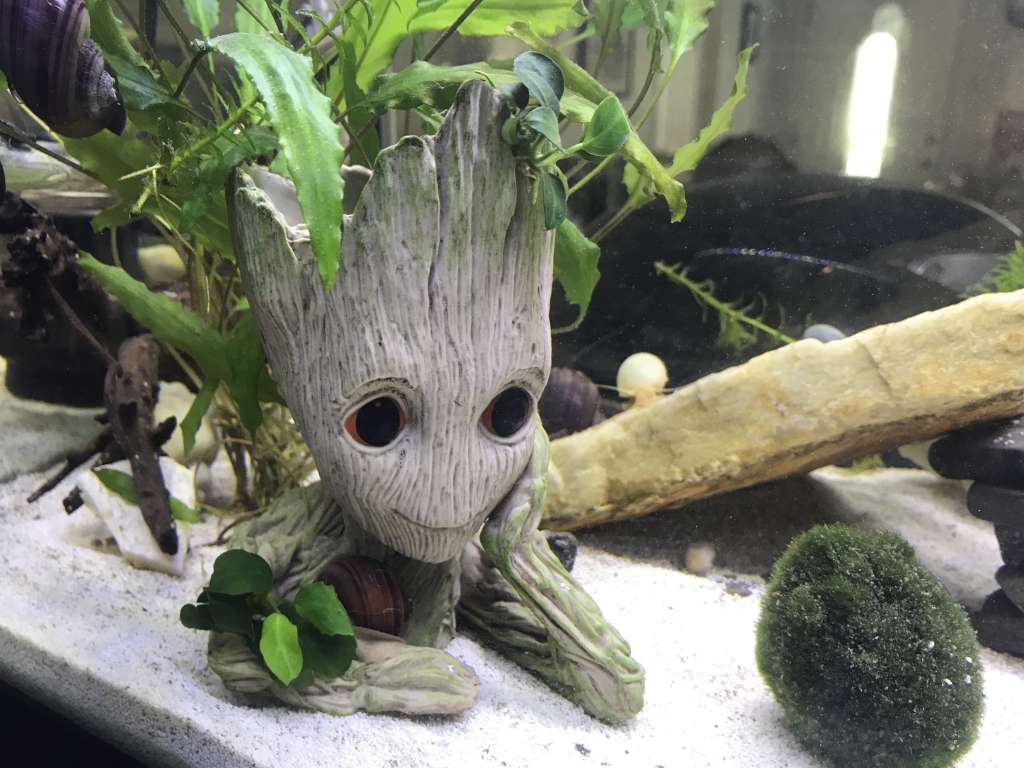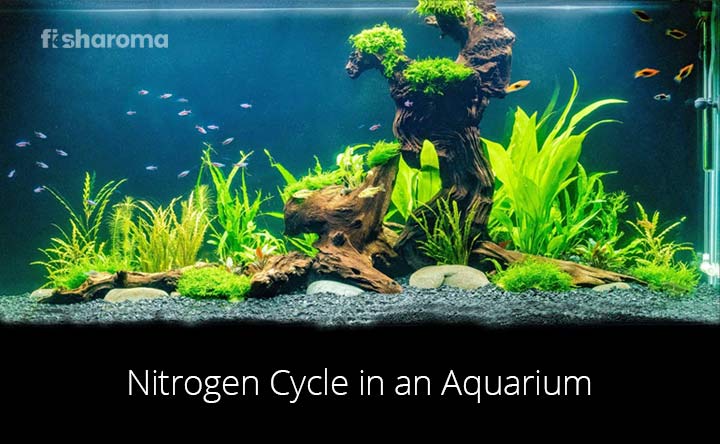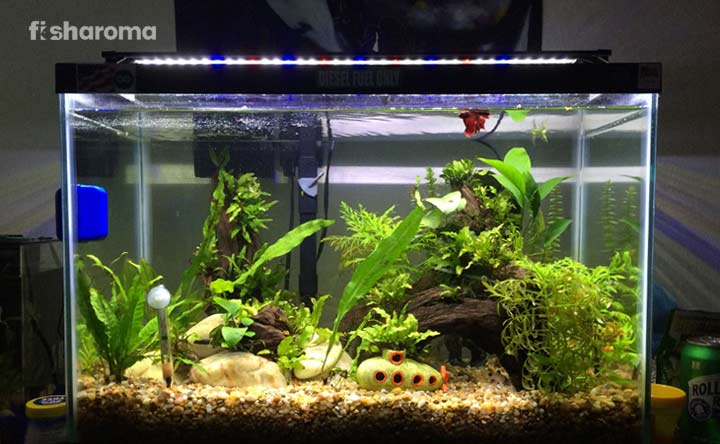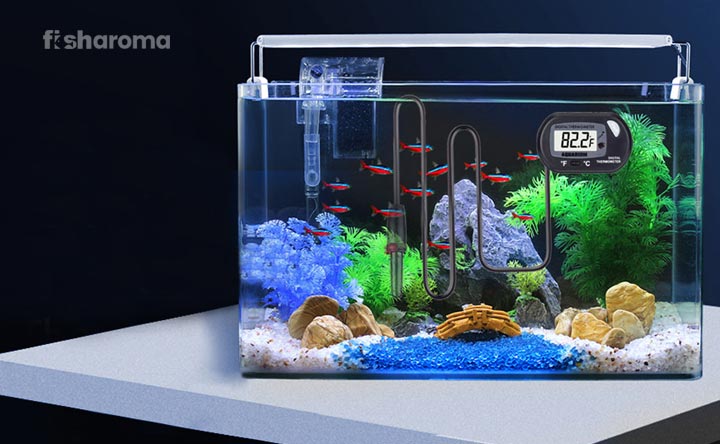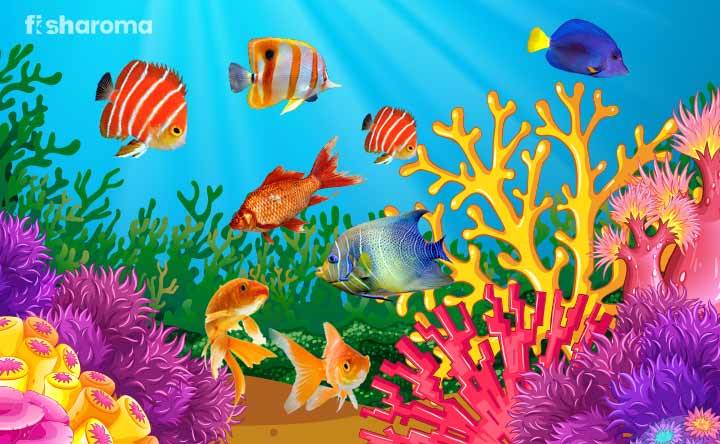A Complete Guide to Make Your Aquarium Brown Algae Free
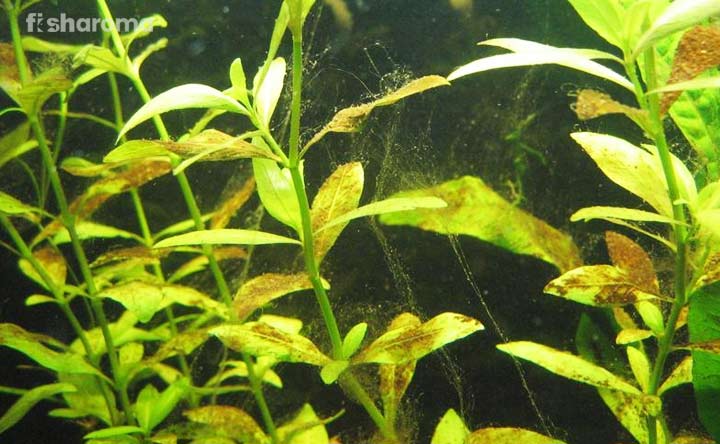
Just imagine your beautiful aquarium with an ugly brown cover of algae! ARRGH! Disgusting! Isn’t it?
Having an aquarium always needs some extra care as you always have to combat the algae problem. Brown Algae or Silica Algae are some of the most troublesome algae that the aquarists find difficult to prevent.
Well, in the aquarium, the growth of algae is quite natural, but when it is Brown Algae, you need to be more careful as it grows out of control very fast. It is because it can form if you are just a little careless during aquarium maintenance.
To prevent it from growing, you need to identify the causes first, and by removing those causes, you will be able to prevent the growth of Brown Algae. Here, a complete guide is presented to prevent it along with its identification, causes, and cleaning.
So, go ahead and learn the process and keep your aquarium Brown Algae free in the future. Let’s start from the grass-root level and understand what this is?
What Is Brown Algae?
Though it is named algae, it is quite unlike other aquarium algae – it belongs to the Phaeophyceae class. It releases oxygen by consuming carbon dioxide – thus, it controls the oxygen level in an aquarium.
It will be better to call it diatom and it can be found in freshwater as well as in saltwater. In most of the cases, it remains unnoticed until a rapid diatom bloom gets conducted and brown lumps are formed inside the aquarium.
How Do Brown Algae Grow?
The reason behind claiming it as algae is it needs nitrate and phosphate just like any other algae. However, it needs silica to survive and it is the basic difference between this and other types of aquarium algae.
Silica is made up of silicon and oxygen and this compound helps the diatom to make a tougher wall outside and makes the removal of these algae more difficult.
Also, the light requirement of these algae is very low and that’s why any unused aquarium (or aquariums which are kept in a dark place) or any new aquarium (where light is not installed properly) is more tend to have excessive growth of it.
The primary appearance of Brown Algae is small brown patches and this is why it mostly remains unnoticed by the aquarists.
Why Is It Important To Clean Brown Algae?
Algae change the chemistry of aquarium water – this reason should be enough to clean it from an aquarium. Apart from this, it looks terrible – it changes the appearance of aquarium décor, aquarium wall, and fake or live aquatic plants as well.
At the same time, it makes difficult to look after the fish too. So, whenever you see this diatom or Brown Algae in your aquarium, clean that immediately. To remove this from your aquarium, first of all, you will need to identify this.
Even though it has a horrible brown appearance on the substrates, decorations, plants and aquarium wall, Brown Algae never harm the fish.
Okay, now, let’s find out the process of identifying Brown Algae here:
Identification of Brown Algae
It is rusty brown in color and sometimes it can be of mustard color as well. Brown Algae are commonly seen on the corners of aquarium first and slowly it covers the aquarium wall, substrates, decorations, and plants.
Now moving on to its prevention, let’s find out the cause of these algae. It often looks like Cyanobacteria (of marine water), but both are much different apart from the appearance. A strong current can blow off Cyanobacteria but when it is Brown Algae, you may have to struggle a little to clean it.
That’s about identification, now, what about cleaning? First, we will know the causes of it as removing the causes can remove it from your aquarium. Check the causes in the next section:
Causes of Brown Algae
The presence of a few elements forms Brown Algae. Know the contribution of each element in detail in the growth of these algae.
Lights
As you have seen any other types of algae (Green Algae) need much light – the reason for such algae is mostly the negligence to turn off the light in the aquarium. However, it does not have any light requirements; rather, it grows in the absence of light or more specifically in low light conditions.
Low Oxygen Level
Due to overstocking, the oxygen level may reduce in the aquarium and carbon dioxide levels may increase. As it consumes carbon dioxide, you may see a rapid formation of Brown Algae in your overstocked aquarium.
Silicates
Silicates come mostly from the substrates – sandy substrates specifically. Sufficient silicates will be enough to encourage the growth of Brown Algae.
Now you have probably understood why reef tanks have so much possibility of Brown Algae – yes, because the salt mixes which contain silicates, encourage the growth of these algae in the reef tanks. The silicate level has to be 0.5 PPM in your aquarium.
These three are the exceptional reasons behind the formation of Brown Algae. Apart from these, the presence of nitrates and phosphates is also responsible here. Take a look at the sources of these two elements:
Nitrates
Nitrates basically come from the fish wastes which form nitrites and that later convert into nitrate. It also comes from uneaten foods, excess fish wastes (a result of overstocking), decaying leaves of the plants and plant fertilizers. Whenever the nitrate level comes up, be prepared to see some algae in your aquarium.
There is a possibility that you have neglected the weekly water testing and the level of nitrate had a sudden rise and Brown Algae got suitable conditions to grow.
Generally, 2.5 PPM is the normal rate of nitrate in any aquarium (reducing it to 0 will also be great too).
Phosphates
Phosphates, on the other hand, come from overstocking, uneaten food, dead algae, dead fish and improper water. Most of the pet fish eat whatever is dropped in the water and if it leaves the food uneaten, you can be sure either your fish is sick or the food quantity was excessive.
For a planted freshwater tank, 1.5-3 PPM will be the ideal level of phosphate; however, if it is a fish only tank, make it 0.5-1 PPM. In the reef tanks, the quantity of phosphate should be below 0.03 Eaters.
That’s about the cause; now check the removal processes of Brown Algae.
Brown Algae Removal Processes
When you want a quick or detailed removal of Brown Algae from your aquarium, you will get several options. Check these out and find the most suitable process for you:
Water Change
As the algae change the chemistry of water, you have to perform water changes to bring back the pre-set water parameters. By changing water, you can reduce the level of nitrate and phosphate.
Cleaning
Cleaning the tank will actually help you to get rid of the existing algae in your aquarium. Cleaning is important because water change will only reduce elements that are required for the growth of Brown Algae, but in order to remove it from your aquarium, you have to clean it.
1. Cleaning the Substrates
You may take the help of the algae scraper or other tools to clean the substrates and aquarium wall from Brown Algae. You don’t necessarily need to scrub, simply wiping can help here. Peeling it off is not possible sometimes as it crumbles off, so wiping is the only option here.
Any kind of chemical or soap can be dangerous, so, use the algae scrappers or pads only.
If your substrate is sandy, cleaning will be a bit difficult and much time-consuming. Be patient and use the gravel vacuum wisely.
2. Cleaning the Decorations
You can soak the decorations and fake plants in a mixture of bleach and water to free them from Brown Algae. You may use a brush to do the same. The water used in the bleach mixture must be dechlorinated water – so, use de-chlorinator here.
Algae Eaters
Adding algae eaters in the aquarium is the laziest, yet one of the best ways to clean Brown Algae. There are several algae eaters for freshwater and saltwater aquariums and adding these will indeed make your aquarium more colorful. Some species which will help you by eating these algae are:
1. Nerite Snails
This particular freshwater species has an appetite for the algae only and they never have any intention to harm the aquatic plants or decors. Similarly, Nerite Snails are not harmful to any of your fish. Only you need to check whether the freshwater fish you are keeping is compatible with this snail or not.
2. Amano shrimps
Amano shrimps are the famous freshwater algae eaters that can eat any algae it comes across. Again check the compatibility of this shrimp before adding in your tank.
Apart from the typical algae eaters, there are a few herbivorous fish that seem to consume algae to a great extent.
For reef tanks, you can go for Trochus Snail or Mexican Turbo Snail which will eat a lot of Brown Algae from your aquarium.
Brown Algae are often not eaten by the herbivorous fish like Otocinclus Catfish, Siamese Algae Eaters, or Bristlenose Pleco. So, to be on the safe side, go for the snails and shrimps.
Add Sufficient Lights
As the low light condition is considered as a good factor for the growth of Brown Algae, so, improving lights will kill those easily. However, you must consider that excess light can give rise to other algae in your aquarium.
Actually, you have to balance the lighting condition smartly. 10-12 hours light (necessarily LED, not metal halide) is very healthy for the fish and it will not encourage the algae growth. You may use a light timer as well. Make sure, your aquarium is getting a minimum of 8 hours of light which will help you to prevent these algae.
Prevention of Brown Algae
Okay, now time for the most important part! It is preventing these ugly looking Brown Algae from coming back in your aquarium. Unless you simply remove the algae and don’t take any preventive measures, it can come again.
Here, prevention basically means the maintenance of the aquarium so that the birth/growth of Brown Algae slows down. Check how you can prevent this:
Choose No-Silicate Substrates
Silicate is probably the most important compound that promotes the growth of Brown Algae and this compound comes from the aquarium substrates. So, here, choosing a no-silicate substrate will work well. Using gravel substrate can be a good idea here.
Use De-Chlorinated RO Water
It is not that silicate comes from substrate only; it may come from tap water too. Tap water also contains a negligible amount of nitrate and phosphate which can work as a reason behind the growth of Brown Algae.
Using de-chlorinated RO water can solve this problem easily. Sometimes a few species need a little bit of salt in the water which has to be the aquarium salt.
Weekly Water Changes
The best way to prevent the Brown Algae from coming back in your aquarium is to follow the water changing guidelines strictly. As per the measurement of the tank, 15-30% weekly water change can remarkably reduce the nitrate and phosphate in the aquarium. Due to this, it will not get sufficient nutrition and die soon.
Cleaning
Aquarium cleaning can help in the same way to prevent the growth of Brown Algae. With a standard filtration, you can clear up the dirt from the aquarium which works as food for Brown Algae. Installing the filter is not all! You have to clean the filters as well. For better filtration, you can add a protein skimmer as well.
Water Testing
Weekly water testing can reveal the level of nitrate, phosphate and other elements in your aquarium water. You will get the recommendations if you need to control it. There are multiple chemical solutions like Seachem PhosGuard to control nitrate and phosphate (both for freshwater and saltwater tank) which can help you here.
Avoid Overfeeding
If you are a beginner, you may find it difficult to understand the exact quantity of food your fish needs. It will be recommended to slightly underfeed the fish on the initial few days. You will learn the exact quantity of fish-food gradually.
You may feed your pet twice or thrice, that too in a very small quantity to determine the correct quantity. Experts said that fish have to consume the food within three minutes. But it will take time to be a master and identify the exact quantity of food that can be eaten within three minutes.
Increase Water Flow
Brown Algae are intolerant with high current in the water, so it will be a great idea to increase the water flow in your aquarium. Slow-moving and stagnant water or the places where the flow created by the aquarium pump cannot reach are the favorites of these Algae. So installing a stronger pump or a powerhead or air pump can help you here.
Add aquarium plants
The aquarium plants and algae gather the same nutrients from water and substrates to grow. But plants are helpful, while algae are mostly disastrous. Keeping aquatic plants will create a lack of those nutrients for algae and the algae will die slowly. Plus, plants create a nature-like ambiance for your fish, so adding plants like Java Moss and Anubias will be a great idea.
Use Sterilizer
With the help of a sterilizer, you can increase the amount of UV light in the aquarium. As Brown Algae are intolerant with high lights, these will die eventually. Sterilizers contain UV light bulbs that can kill pathogens, bacteria, algae and other harmful elements of the aquarium without harming your pet fish as the chemical solutions do.
Summary
In your beautiful tank set-up, Brown Algae are like a real disgusting element that destroys the charm of your aquarium. To avoid such a gross appearance of the aquarium, you have to know the reasons and prevent these by removing those reasons.
Above all, we need to provide a healthy environment to the pet fish which becomes unhealthy because of Brown Algae. You may think that it’s okay to delay the cleaning as it does not harm the fish but if the quantity of this gross-looking algae increase, it may be difficult for your pet fish to survive.
Algae in your aquarium also indicate the optimal balance of your aquarium water is interrupted which you can never be taken lightly. So, take preventive measures as soon as you notice these Brown Algae in your aquarium.
It is not a big deal to clean and prevent Brown Algae – so, stop having nightmares about it.
Some Other Articles about Algae Control
Take a look at some of our other articles that address the issue of aquarium algae:
- Best Algae Eaters – A smart way to protect your beautiful aquarium from unnecessary algae is to add algae eaters. Know about some algae eating critters here.
- 11 Common Types of Aquarium Algae and their prevention – Out of control algae is always a big problem. Check this article to identify the particular type of algae in your aquarium and ways of preventing it.

